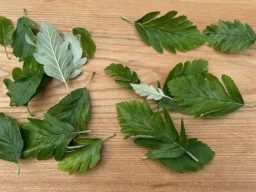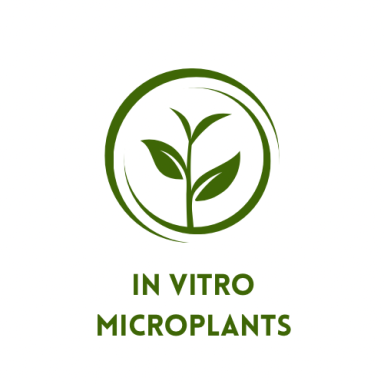Recent Projects




Hedlundia Species meristem extract
July 2024
Hedlundia arranensis, sometimes referred to as the Scottish or Arran whitebeam, is a species of plant in the family Rosaceae. It is endemic to the island of Arran in Scotland.
Arran whitebeam is on the International Union for Conservation of Nature (IUCN) Red List of endangered species because there are so few individual trees left and its range is very restricted.
In our laboratory, we follow a meticulous four-stage sterilization process to ensure the cleanliness and purity of all the cuttings we receive.
Afterward, under the controlled conditions of a laminar flow cabinet, we carefully extract meristems with primordial leaves from the buds.
These precious samples are then placed in a specialised tissue culture medium, providing them with an optimal environment of 16 hours of light and 8 hours of darkness each day, at a temperature of 25 degrees Celsius.
After placing the meristem with primordial leaf in the tissue culture medium, it will undergo a process called in vitro culture.
Over time, the meristem will differentiate and give rise to new tissues, such as shoots, roots, and leaves. This process allows for the propagation of plants in a sterile and controlled environment, free from viruses and pathogens.




Wych Elm seed embryos
May 2024
While embryos from seeds can be used for in vitro micropropagation, they may not always be the best choice due to genetic variation, contamination risks, slower growth, varying developmental stages.
Other explant sources, such as shoot tips or meristems, may offer more consistent and efficient results in micropropagation.
However, seeds were carefully procured from the local Wych Elm, subjected to thorough sterilisation using 3% hydrogen peroxide.
Subsequently, in a laminar flow cabin, the embryos were meticulously extracted from the seeds and placed on a nutrient-rich tissue culture medium.
In addition, we placed some cuttings into nutrient-rich droplets and stored them under freezing conditions for further testing and analysis.
Remarkably, within a week's time, discernible root establishment and microplant growth were observed, exemplifying the successful progression of the experiment.




Acer Rubrum Brandywine meristem explant
Aug 2024
Acer rubrum 'Brandywine', commonly known as the Brandywine Red Maple, is a popular cultivar of the red maple tree.
One of the most exciting features of the Brandywine is its breath-taking autumn colours.
It grows relatively fast and can reach heights of 40 to 50 feet.
The Brandywine loves a variety of soil types, even those wetter spots, and it’s tough enough to handle urban pollution.
Brandywine red maples are known for their good health, showing great resistance to common diseases, which makes them easier to care for.
In our In Vitro laboratory we use young, actively growing tips of the plant, where meristematic tissue is located.
Under sterile conditions in a laminar flow cabin, we carefully excise small sections of the meristematic tissue. Each explant should ideally include the apical meristem and a few leaf primordia.
Then we transfer the sterile explants onto prepared growth media with appropriate concentrations of auxins and cytokinins to promote shoot and root development.
We keep our microplants in our growth chamber with controlled temperature and light conditions to encourage optimal growth.
Once sufficient shoot proliferation has occurred, subculture the new shoots onto fresh media for further growth or rooting.
Using Acer rubrum meristem explants in tissue culture not only allows for the rapid propagation of this beautiful species but also supports conservation efforts by producing disease-free plants.


Acer Tegmentosum Joe Witt meristem explant
Aug 2024
Acer Tegmentosum, commonly known as the Manchurian Maple, is an intriguing species that brings both beauty and ecological benefits to gardens and landscapes.
Acer tegmentosum is admired for its striking bark, which is smooth and gray with a beautiful, peeling nature.
The leaves of the Manchurian Maple are dark green and lobed, turning vibrant shades of yellow and orange in the fall.
This species is generally resistant to many common pests and diseases, and
beyond its aesthetic appeal, this tree contributes to carbon sequestration and air quality improvement.
In the realm of plant tissue culture, the use of bud meristem explants has become a vital technique for propagating plants efficiently.
Utilising bud meristem explants is an effective way to produce disease-free plants. Since meristems are located at the tips of shoots, they are less likely to harbor pathogens compared to older tissues. By propagating from meristems, growers can ensure that their plants are free from diseases that could affect yield and quality.
Bud meristem explants provide a method for cloning plants, resulting in genetically uniform offspring. This uniformity is crucial for commercial growers who require consistent traits in their crops, such as flower colour, growth habit, and disease resistance.
In conclusion, bud meristem explants are a powerful tool in plant propagation, offering high regeneration potential, the ability to produce disease-free plants, and genetic uniformity.


Betula Utilis meristem explant
Aug 2024
Betula Utilis, commonly known as Himalayan Birch, is a deciduous tree native to the Himalayan region, particularly found in countries like India, Nepal, and Bhutan.
This species is renowned for its striking white bark, which peels in thin layers, providing a unique aesthetic appeal. The bark is often used in traditional crafts and can also serve as a natural source of fuel.
The tree provides habitat and food for various wildlife species, including birds and insects, contributing to biodiversity in its natural habitat.
Micropropagation is a widely used technique in plant biotechnology that allows for the rapid multiplication of plants under controlled conditions. Utilising meristem explants from Betula utilis (Himalayan Birch) for micropropagation can enhance the production of genetically uniform and healthy plants.
Once shoots begin to develop, we subculture them onto fresh media to promote further growth and elongation.
After sufficient root development, we acclimatise the plantlets to ex vitro conditions by gradually expose them to ambient light and humidity.
Once the plantlets are acclimatised and show signs of healthy growth, they can be transplanted into pots or directly into the field for further growth and establishment.
This technique allows for the quick production of a large number of identical plants, which is particularly beneficial for commercial nurseries and conservation efforts.
Starting from meristematic tissue reduces the risk of transmitting diseases, ensuring the production of healthy plants. The process ensures that all propagated plants maintain the desirable characteristics of the parent plant, making it ideal for maintaining specific cultivars.
Micropropagation using meristem explants from Betula utilis is an effective method for producing high-quality, uniform plants suitable for various applications, including reforestation, landscaping, and research.



Corylus Avellana meristem explant
Aug 2024
Corylus avellana, commonly known as the Common Hazel.
Biotechnology and recent studies have enabled the development of efficient micropropagation methods for Corylus avellana. Using tissue culture techniques, we can propagate large numbers of genetically uniform plants from meristematic tissues, such as shoot tips or nodal segments. This method not only accelerates the multiplication process but also produces disease-free plants, which is crucial for maintaining healthy orchards.
The use of tissue culture techniques allows for the conservation of rare or endangered hazelnut varieties. Through in vitro propagation, conservationists can maintain these genetic resources while providing a means for reintroduction into their natural habitats.
Biotechnology plays a role in improving the nut yield and quality of Corylus avellana. Research into the biochemical pathways involved in nut development and ripening can lead to enhanced agricultural practices and post-harvest management strategies.
The application of biotechnology in the propagation of Corylus avellana contributes to ecosystem restoration and biodiversity.
By developing disease-resistant varieties and improving crop management through biotechnological research, growers can reduce reliance on chemical pesticides and fertilizers, leading to more environmentally friendly production systems.
At In Vitro lab we start by selecting young, healthy apical or axillary buds from the plant. With a sterile scalpel, we carefully remove the outer scales or leaves of the bud to expose the inner meristematic tissue. We then extract the small, dome-shaped meristem and immediately place it onto a sterile tissue culture medium, such as MS medium, which may be supplemented with growth regulators.
Mole HVAC Equipment Ltd efficiently operates and oversees the management of In Vitro Microplants company, ensuring seamless integration and effective execution of business operations. 21 Kingsgate, Stonehaven, AB39 2FL, Scotland / Registered in Scotland no. 346591 / VAT No. GB938817281
We need your consent to load the translations
We use a third-party service to translate the website content that may collect data about your activity. Please review the details in the privacy policy and accept the service to view the translations.
